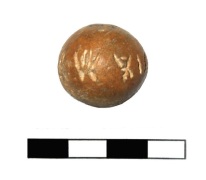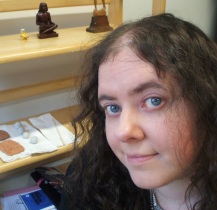Did you know that 2019 is the UN’s International Year of Indigenous Languages? There are thousands of languages spoken in the world today, but many of them are strongly localised and in danger of dying out because of the small size of their speech communities, and because their speakers often choose to use successful global languages over their local languages. IYIL sets out to raise awareness of indigenous languages in order to benefit their speakers and to bring about a better appreciation of their important contribution to the world’s cultural diversity.
What I want to talk about briefly in this post is the writing down of indigenous languages, in the ancient world as well as the modern – really just a few collected thoughts on diversity of experience.


Writing is typically seen as a visible and physical manifestation of speech, and in that sense it relates closely to language. But there is no perfect fit. There is no reason why a language should be written down — literacy is really a response to other cultural factors like the need to record certain types of information or to communicate in certain ways or to build ways of communicating with communities that use other languages. Literacy is incredibly culturally specific. And I want to emphasise from the beginning that I have no intention of being prescriptive here or implying that writing is necessary. In fact, all of the cultural factors I just mentioned could perfectly well be facilitated through oral traditions, and in many societies they are. But writing is a phenomenon that many societies do acquire and it can interact in interesting ways with the linguistic composition of those societies.
Two examples from India and China
At our recent CREWS conference, there were two papers that especially brought home the message to me that different societies can have completely different relationships with writing. Cécile Guillaume-Pey told us all about her work with the Sora people of Orissa in India, who use an alphabet devised by the local scholar Mangaya Gomango in the 1930s. This alphabet (known as Sorang Sompeng) is sacred to the Sora people, who consider each letter to represent an ancestral or local spirit and engage in ritual activities that involve drinking a potion that physically embodies the writing system.

The alphabet, alongside the language written in it, is a strong marker of local cultural identity, and its users are striving for official recognition of language and script. With the appearance of some state-sponsored uses like signage, it is gaining some traction and becoming more visible in urban spaces. So it can be seen as desirable to increase the visibility of a local language and writing system and thereby legitimise and raise awareness of its use.
At the same conference we also had Aurélie Névot speaking to us about the writing system used by bimos (masters of psalmody, or shamans) of the Yi people in Yunnan Province, China. These traditional writings are a product of master-disciple relationships and they change with each new master-disciple pairing, to such an extent that they are typically considered undecipherable by outsiders. It was only by studying with a bimo herself that Aurélie was able to access and understand these traditions.

But what is really interesting here is that there is not the same desire to find recognition for bimo writing, precisely because it is so strongly rooted in a closed and deliberately secretive tradition. There is an ‘official’ version of the script promoted in state education, but it lacks the mutability of traditional bimo writing, and has become homogenised and far-removed from its original context of usage. Meanwhile, the local shamanistic tradition it derives from is sadly on the verge of disappearance. So ‘state sponsorship’ can have very different effects depending on the cultural context and type of writing.
‘Indigenous language’ in ancient Cyprus

These issues reminded me quite a lot of the situation in ancient Cyprus, something I have worked on for many years. ‘Cypro-Minoan’ writing from the Bronze Age remains undeciphered, and we do not recognise any language or languages written in it. However, we are able to read Cypriot inscriptions from the later Iron Age because they are written in a newly developed variant of a similar writing system, which we call the ‘Cypriot Syllabary’, and which was deciphered in the 19th C. That means that we can say much more about the linguistic composition of the island during the 1st millennium BC (on which, see also this post).
During this later period, Greek is well attested on Cyprus, from c.1000 BC onwards. It is difficult to say exactly how and when it ‘arrived’ on the island. Its dialect is closely related to one found in central Greece (Arcadian), which may indicate settlers from that area, but on the other hand we can’t explain the success of the language by settler activity alone — it must have been considered a useful language to speak by others living on the island too. This would be typical for language ‘movement’, because languages can shift in an area without people physically moving around. Deciding to acquire another language, and choosing what language to use in what situation, can lead to some languages being more robust while others are at risk of disappearance. Indeed, this is a large part of the story behind language death in the modern world, as people start to use their local language less if they see a reason to use a more widely spoken language more.

In fact, looking at the ancient world, it is often difficult to explain how a given language or language family arrived in a given area. Greek has a longstanding tradition in Cyprus and now, in the present day, it has been a majority language of the island for more than 3,000 years, and it is a huge part of its cultural heritage.
But in talking about Cyprus I actually wanted to tell the story of Eteocypriot. Eteocypriot is our name for a language that died out in the ancient period, and we don’t really understand it apart from being able to identify some word endings and one or two word meanings. Fewer than 30 inscriptions survive that contain previously identified features of this language, so we have little hope of understanding it better at the moment — despite the survival of a few bilingual inscriptions (in Eteocypriot and Greek). Although difficult to prove, Eteocypriot is thought to be a descendant of a language spoken in Cyprus during the Bronze Age.


Eteocypriot inscriptions have been found in many areas of the island (they are represented by fuzzy ‘sunburst’ shapes in the map above) but the greatest number were found in the city of Amathus on the south coast, where the language seems to have enjoyed a special degree of visibility. One of the earliest Eteocypriot inscriptions from Amathus, perhaps as early as 7th C BC, is on the handle of a colossal 2m high stone vase (the ‘Great Vase of Amathus’) that was placed on the city’s acropolis in the centre of its civic landscape. We also have inscriptions on pottery and on the lintels of tombs, although the small numbers of surviving inscriptions make it difficult to understand the full range of uses of writing in Eteocypriot language. As far as we can tell, it was only ever written in the Cypriot Syllabic script, the same one used widely for the island’s Greek dialect.

Towards the end of the 4th C BC, things seem to have changed in Cyprus’s linguistic and epigraphic landscape. At this time people were becoming more aware of and interested in customs across the Mediterranean, like the use of the alphabet in other Greek-speaking areas. Then the whole island (whose cities were previously independent kingdoms) was taken over by the Ptolemaic dynasty. Under the new administration the Greek alphabet, and the Mediterranean-wide Greek dialect known as the ‘Koine’, became the standard for official inscriptions, and the Cypriot Syllabic script that had long been a symbol of Cypriot identity was increasingly marginalised.
One of the Eteocypriot/Greek bilingual inscriptions (the only complete one surviving) gives a nice illustration of the language- and script-related tensions at about this time. From the Greek part of the inscription on a black marble slab (which is in alphabetic, Koine Greek, rather than the local dialect), we know that it was set up by the city of Amathus to honour an individual called Ariston Aristonax. Visually, the Eteocypriot part takes precedence and is placed above the Greek, and it is quite a bit longer so may contain more information.

(If you want to have a go at transliterating the Eteocypriot bit at the top, you can download our Cypriot Syllabary sheet and try it! The name a-ri-si-to-no-se is outlined in red along with its equivalent in the Greek alphabet. Remember that the Eteocypriot part reads from right to left.)
But this is not a typical Eteocypriot or even Cypriot inscription. It is a type of honorific monument that would look much more at home in a central Greek-speaking area like Athens and the phrasing is reminiscent of the democratic political set-up of such a place. It must have been set up by locals (“the city of the Amathusians” according to the Greek text), but the sense that they were caught between local Cypriot traditions and wider Mediterranean customs is tangible. This is a hybrid, a compromise between languages, scripts and customs.
Language and writing, contact and context
We don’t always get very good evidence for language death in the ancient world, but this inscription feels like a window on the linguistic situation of late 4th C BC Cyprus. The Eteocypriot language was still alive and spoken at this stage, but its speakers were already making choices to accommodate more widely spoken varieties. Probably the next step was a split in usage, where Eteocypriot (like the local Cypriot Greek dialect) stopped being useful for some purposes (e.g. official or political ones) but continued in others (e.g. religious practice and day-to-day home life), before it was eventually lost altogether.

The thoughts in this blog post are about trying to understand how languages exist and thrive and why they might fade and die, as well as the particular question of how writing can interact with the vitality of languages. I think what I want to say is that I do not think there is any single right way or wrong way to ensure the continued vitality of a language, but what is crucial is to understand the context in which it is used and spoken and perhaps written (or perhaps not). Writing might give a language new avenues of expression, but it might also restrict or change it, depending on the cultural context. Likewise, state-sponsored interventions can be both positive and negative, depending on the degree to which they take account of that context.
The message of the International Year of Indigenous Languages (you will have seen some of their posters scattered through the post) is that indigenous languages are precious features of our global cultural diversity, and they are worth trying to preserve along with the customs that go hand-in-hand with them. I’d like to thank everyone around the world involved in these efforts, and I hope the thoughts (and digression on ancient Cyprus) in this post are of interest. Please visit the IYIL website to find out more about how you can help or get involved.
~ Pippa Steele (PI of the CREWS project)


Very interesting Pippa. Thank you.
LikeLike